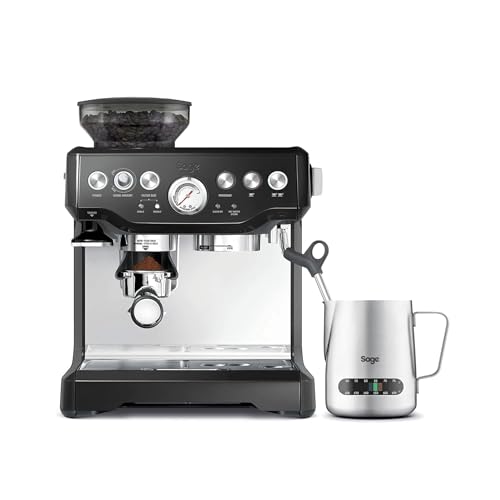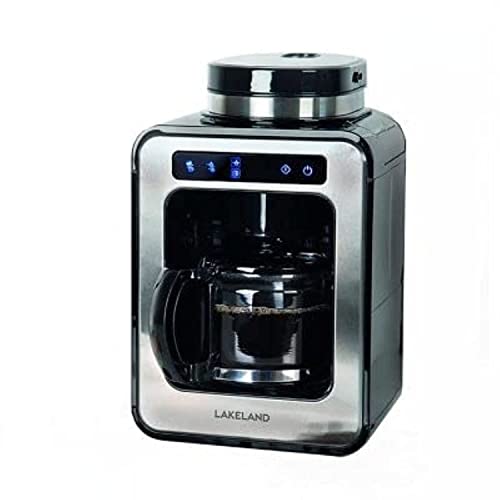Why You Should Concentrate On Improving Bean Coffee Machine
페이지 정보
작성자 Brandi Towner 작성일 25-01-31 20:19 조회 2 댓글 0본문
 coffee beans coffee machine Bean Coffee Machines
coffee beans coffee machine Bean Coffee MachinesWith a coffee bean maker allows you to take pleasure in delicious, fresh whole bean cup coffee machine espresso that is made according to your preferences. The machine grinds, measures, tamps and then forces hot water into the grounds to make delicious, flavorful coffee.
 These machines offer a variety of advantages over pod machines, including less environmental waste and a simple to use. The machine is fully automated and operates at the touch of a button.
These machines offer a variety of advantages over pod machines, including less environmental waste and a simple to use. The machine is fully automated and operates at the touch of a button.Here are a few alternatives to the word "grind"
When you make your own coffee, the kind of grind you choose is crucial to get the best cup of coffee. The particle size, shape, and consistency are all important. If beans are not properly crushed, it can cause the water to move too quickly through the grounds which can result in a lack of flavor or over extraction of bitterness.
A good grinder should have various sizes of grind so that you can select the most suitable method for your brew. It's important that you try different sizes of grind, as this can affect the taste of your coffee. The smallest particles are best for espresso and French presses, while larger, coarser particles are better for immersion brewing such as the Moka pot or Chemex.
If you're looking to make an even more exquisite cup of coffee, try roasting your own beans and then grinding them prior to brewing. This will increase the aroma and flavor of your brew and help create a perfect cup every time. It is also essential to store the ground beans in an airtight container an area that is cool and dark to ensure their freshness and flavor.
Commercial coffee beans coffee machine machines offer unparalleled convenience and allow you to enjoy barista-quality coffee at the push of a button. These machines take care of everything from making the beans to tamping making them a great option for busy cafes and offices.
The first step is grinding your beans to a precise size. They can be adjusted to match the brew method you prefer, and they can be programmed to dispense the appropriate amount of cups or shots simultaneously. Some will automatically tamp the grounds to form a perfectly compacted puck of coffee, which ensures the most consistent extraction.
A bean-to-cup machine typically has large hoppers for you to fill with beans. The machine will automatically grind the beans and dispensing the right amount of your chosen brew. The machines usually have a display on them to display the size of grind and dosage chosen, as well as the total number of drinks it's set to prepare.
Extraction
When a coffee bean is crushed it breaks into smaller pieces, referred to as particles. The size of the particles could affect the extraction process and the final cup's flavor. In the machine that brews coffee the size of the particles is controlled to match the extraction type that is required by the machine. This lets you make a great cup of coffee every time and does not require the skills of baristas.
A bean to cup machine lets you adjust the brewing time to achieve the strength you desire. This is a significant advantage over pod machines which give you less control and can lead to weaker or bitter tasting espresso. bean machines-to-cup machines permit you to control not only the brew time but also the water temperature. This lets you decide how strong your coffee will be.
Extraction is an extremely delicate process that is dependent on the correct balance of particle size, dose and tamping pressure. If any of these variables are not in order, it could result in a poorly extracted coffee. Under-extracted coffee will taste sharp and sour, while over-extracted coffee will taste bitter and dry.
To ensure that your coffee is extracted properly you must use a high-quality grinder and the correct type of beans. Light roasts can be not a good choice for espresso machines or fully automated machines due to the short time for extraction can leave the coffee lacking body and flavor. Darker roasts with a higher Robusta percentage, such as our Jhai (100% Robusta), or Tiga Terra are better for these machines because they provide more robust flavors and bodies.
The decision between a pod-based coffee maker and a bean-to cup machine is ultimately based on the convenience factor and personal preference. Pod coffee machines are convenient for making tea and coffee. However they aren't as cost-effective and generate waste when disposed of used pods.
Dispensing
Using whole beans eliminates pods, which can save you money and providing more flexibility. However this also means your machine requires more regular maintenance and cleaning than a pod-based model.
Fortunately they've been made with low maintenance in mind, and many include features to make this task easier. For example, most coffee makers with beans-to-cups have automatic rinsing and cleaning cycles which makes it simple to keep your machine clean without disrupting your day-to-day operations.
The ability to add hot, steaming milk to coffee drinks is a further beneficial feature. This allows your team to modify their drinks to their tastes and preferences while increasing productivity. It's also a good way to show that you care for your team's well-being. It has been proved scientifically, that coffee can increase the production of dopamine as well as norepinephrine, which improves focus and motivation at work.
Certain models provide even more customization options for beverages, such as texturizing the milk in cappuccinos or lattes. This feature is a key selling point for baristas, who may only have a short amount of time to make each cup of coffee.
Another thing to look for in a high-quality bean-to-cup maker is its water tank and the size of the bean hopper. The tank determines the length of time the machine can run before requiring a refill, and the size of the hopper determines the frequency you'll need to replenish your beans. The larger capacity the lower the frequency you'll need to replenish.
Before purchasing a bean-to-cup coffee maker, you should be aware of the type of beans you'll be using as different grind sizes affect the flavor and consistency of each cup. You'll also want to check out the machine's programmable options that allow you to modify your drinks to taste exactly the way you like.
In some instances the dispensing spouts in your coffee bean to cup coffee machine for home (https://telegra.ph/The-3-Biggest-Disasters-In-Coffee-Machines-Beans-The-Coffee-Machines-Beanss-3-Biggest-Disasters-In-History-08-27) machine may be blocked by coffee residue and other debris left behind after grinding. To avoid an inconsistent and slow flow that could result in an insufficient amount of grounds for bean to cup coffee machine for Home coffee, the spouts need to be cleaned regularly. This could be due to an uncracked grind setting, too oily or dried beans, or lack of regular cleaning.
Cleaning
Cleaning coffee bean machines machines is an essential aspect of maintaining them. It stops the buildup and accumulation of residues that can affect the taste and quality. Regular cleaning keeps the machine in good working order and also reduces the risk of a malfunction that could cause an expensive repair bill. Many bean-to cup coffee makers come with a built-in daily cleaning cycle that flushes through pipes to clean the brewing unit. Others will have separate milk side cleaning cycle in order to ensure that both spouts are clean and safe.
A good rental supplier will typically train employees on the complete maintenance and cleaning procedure during installation. This will reduce confusion and ensure that the procedures are followed. A clear set of instructions and a complete understanding of the process will assist in avoiding any mistakes that could result in costly repairs or poor quality drinks.
It is recommended to wash the carafe, the permanent filter, and brew basket after every use in hot, soapy water or in the dishwasher if they're designated as safe for this. It is also a good idea to run two to three times with fresh water, without K cups or ground coffee in the machine between use. This will help flush out any oily residue and prevent the build up of bacteria, yeast or mould.
For single-serve or pod coffee machines it is a good idea to do a deep clean and descale once every four weeks. A vinegar solution is typically used for this. Add up to four cups of vinegar to the reservoir and run the machine through a brewing process. After the cycle is completed wash and descale according to the instructions of the manufacturer and run a few cycles of clean water to eliminate any vinegar smell.
Commercial machines often come with a built-in telemetry system that records the details of every cleaning cycle. This can be reviewed by you or your supplier to make sure that the machine is regularly cleaned. This could also notify you if any of the moving parts have become stuck or jammed which would require more detailed maintenance and repair work.
- 이전글 5 Double Glazed Window Bromley Lessons From The Professionals
- 다음글 Now That You've Purchased Bio-Ethanol Fireplace ... Now What?
댓글목록 0
등록된 댓글이 없습니다.






